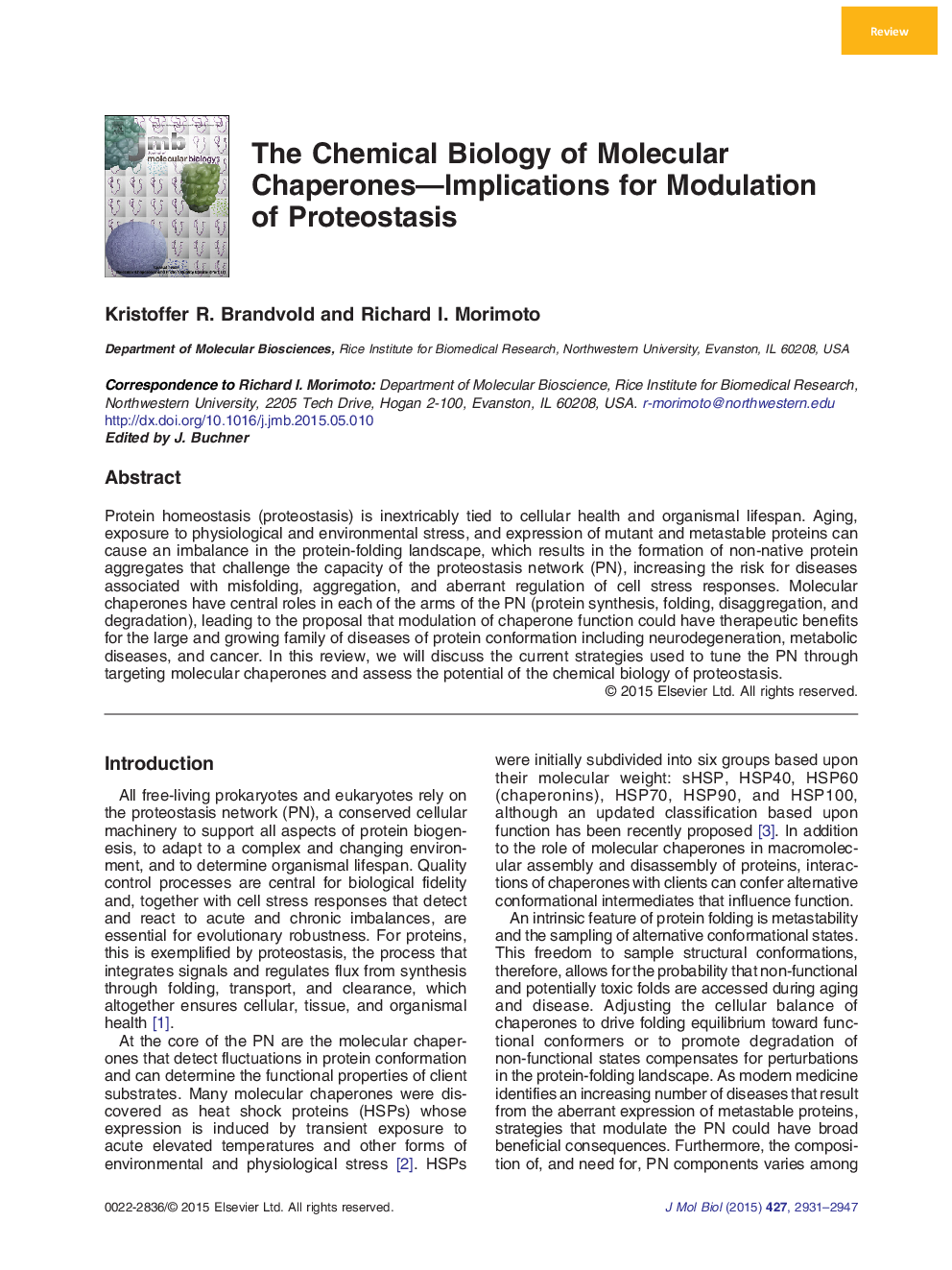| کد مقاله | کد نشریه | سال انتشار | مقاله انگلیسی | نسخه تمام متن |
|---|---|---|---|---|
| 2184494 | 1095867 | 2015 | 17 صفحه PDF | دانلود رایگان |

• The PN has many pharmacological targets that are relevant to many protein-misfolding diseases.
• Molecular chaperones are a major pharmacological target within the PN.
• HSP90 has received the most attention as a pharmacological target, but HSP70, the chaperonins, and the various co-chaperones of the PN are increasingly becoming viable targets through the application of a variety of strategies.
Protein homeostasis (proteostasis) is inextricably tied to cellular health and organismal lifespan. Aging, exposure to physiological and environmental stress, and expression of mutant and metastable proteins can cause an imbalance in the protein-folding landscape, which results in the formation of non-native protein aggregates that challenge the capacity of the proteostasis network (PN), increasing the risk for diseases associated with misfolding, aggregation, and aberrant regulation of cell stress responses. Molecular chaperones have central roles in each of the arms of the PN (protein synthesis, folding, disaggregation, and degradation), leading to the proposal that modulation of chaperone function could have therapeutic benefits for the large and growing family of diseases of protein conformation including neurodegeneration, metabolic diseases, and cancer. In this review, we will discuss the current strategies used to tune the PN through targeting molecular chaperones and assess the potential of the chemical biology of proteostasis.
Figure optionsDownload high-quality image (102 K)Download as PowerPoint slide
Journal: Journal of Molecular Biology - Volume 427, Issue 18, 11 September 2015, Pages 2931–2947